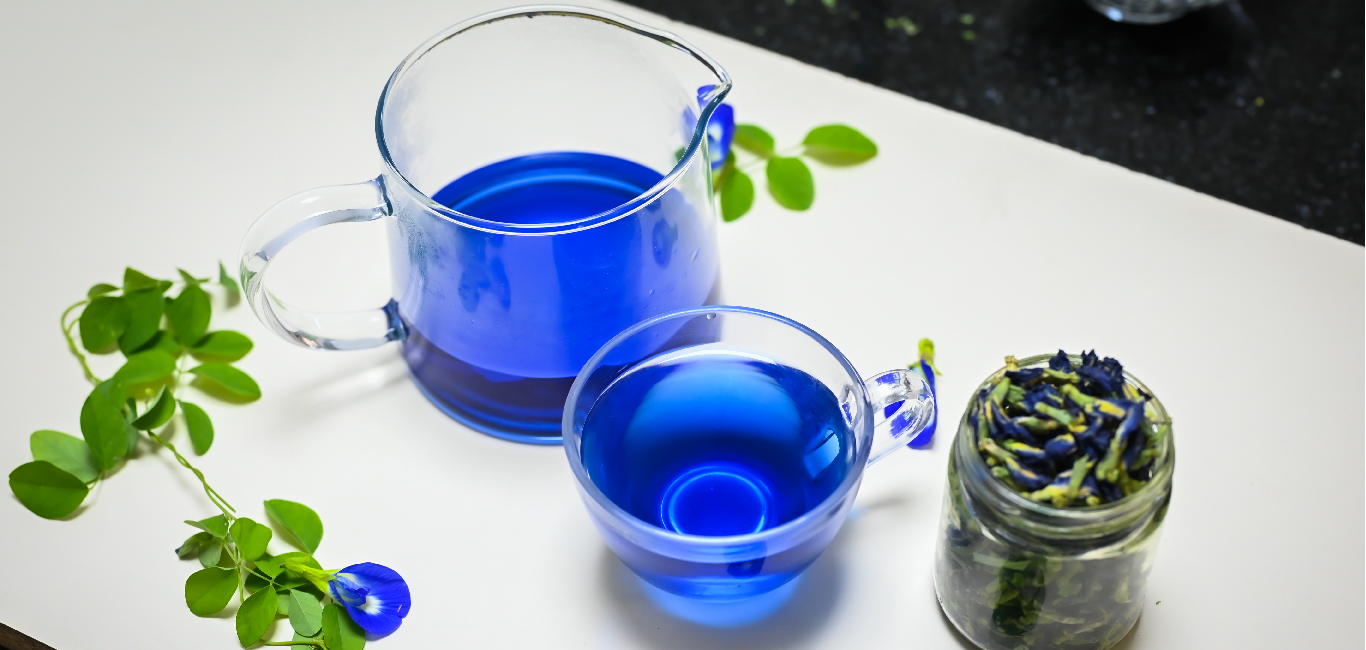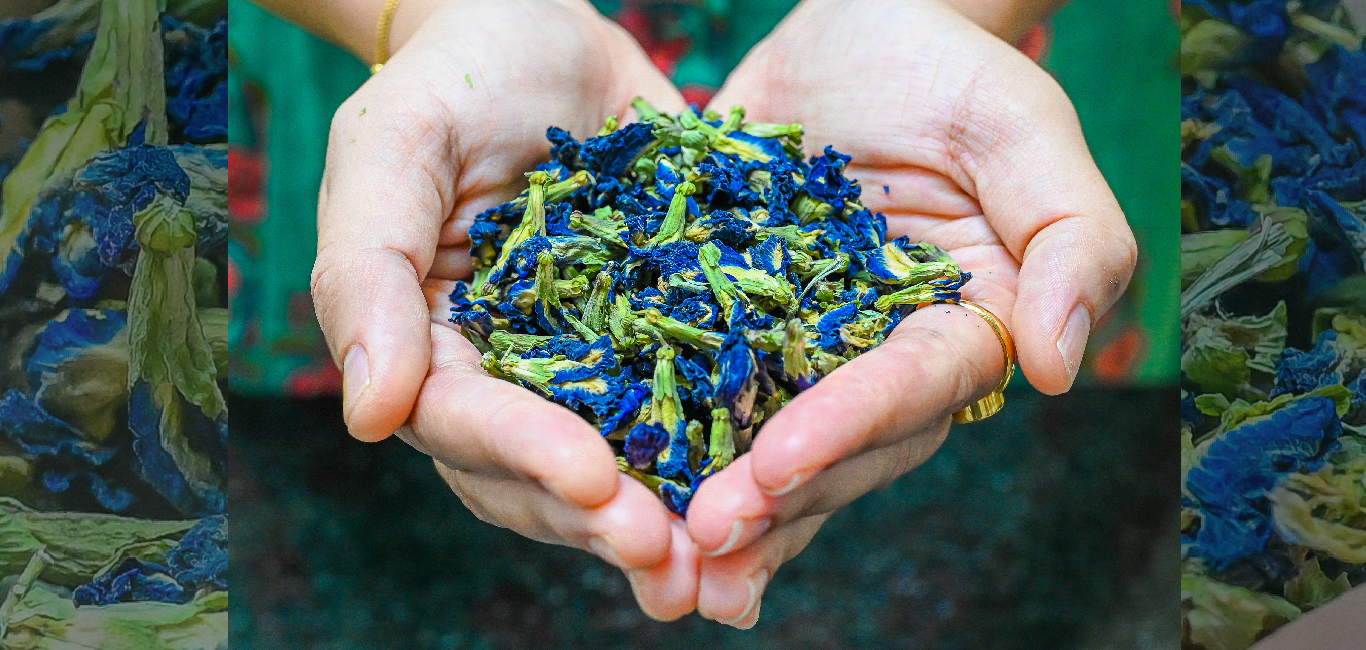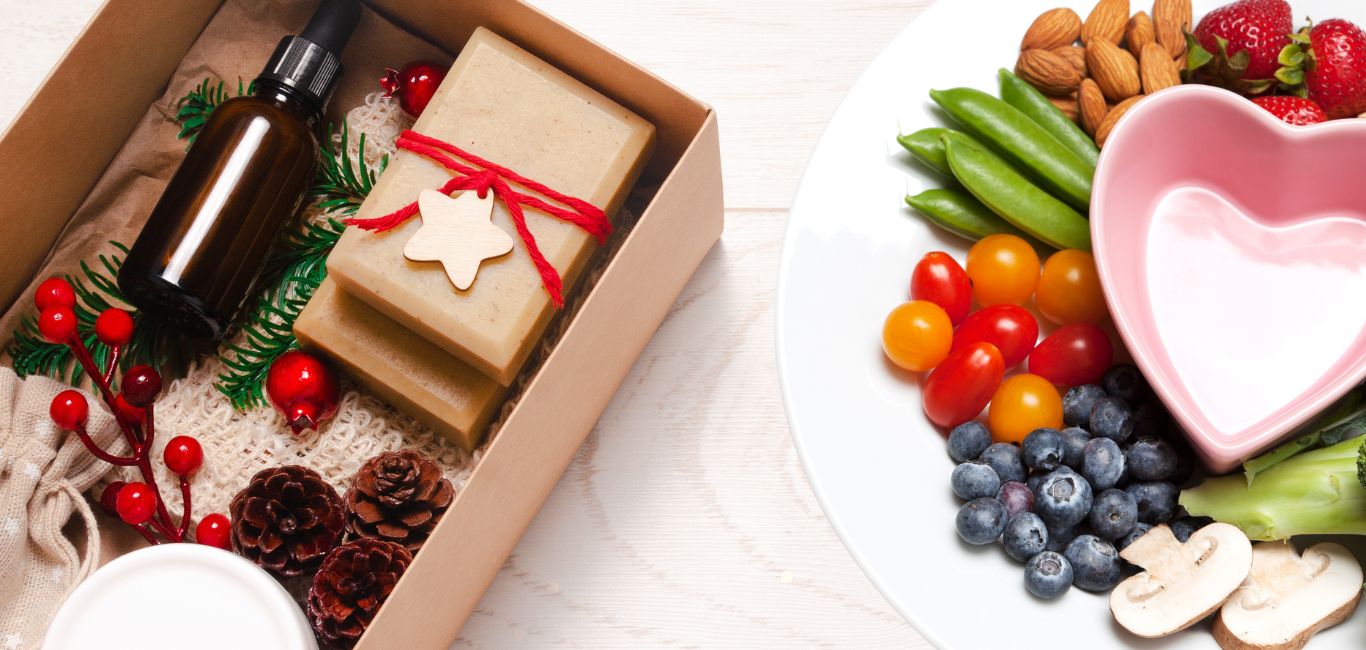
A warm cup of tea is what most of us crave daily. While many find comfort in good old, amber-coloured masala chai (popular Indian tea), or the bergamot-infused Earl-Grey or even English tea, a tidy number of tea enthusiasts have taken to a unique azure-coloured tisane.
This caffeine-free drink called blue pea tea is being consumed by many on a regular basis. Forty-seven-year-old Mini Kunhiraman, from the US, regularly drinks blue tea. “This tea is very refreshing and there is no overbearing aftertaste,” says the software engineer.
From a wide range of organic teas sought-after for their medicinal properties, easy-to-make recipes, and the power to work wonders for the body, mind, and soul, an interesting addition comes in the form of blue tea.
Here is what you need to know about blue tea
- Blue tea, also called butterfly pea tea, is a caffeine-free herbal tea made from a decoction of the flower petals or even full flowers of the Clitoria ternatea plant
- Blue vine, pigeon wings, darwin pea, sangapoo, aparajitha and shankhpushpi are the other common names
- Blue tea is made of freshly plucked or dried flowers
- The tea colour turns into shades of blue when the flowers are brewed
Benefits aplenty
In a randomised study, the acute effect of blue pea tea on glycemic response and antioxidant capacity in healthy individuals showed a positive response.
Blue tea or butterfly pea tea recently became quite popular worldwide in the form of “blue latte” sold in craft coffee shops, for six dollars a pop, in Instagram-worthy, gorgeous presentations, says Susan Diaz, a podcasting founder from Ontario, Canada.

For long herbalists or Ayurveda experts have called it shankhpushpi, which is the main ingredient in traditional brain tonics. Ayurveda practitioners say that it helps to calm the mind and support higher brain function. Moreover, it promotes a healthy sleep cycle.
Dr Paul Haider, master herbalist, California, says blue pea florals are rich in antioxidants. Experts say this herb reduces mental fatigue and improves focus, concentration, and calmness.
The flower is also used in the cosmetic industry for anti-ageing benefits. A review article published in the journal, Evidence-Based Complementary and Alternative Medicine reported that shankhpushpi or blue pea is one of the ayurvedic herbs used to slow down brain ageing and enhance memory.
These flowers are available in most countries. One can use dried flowers or even fresh flowers to make the herbal tea. This garden flower is rich in triterpenoids, flavanol, and anthocyanins to help in healthy fat metabolism.
How to make blue tea?
The best way to make this herbal tea is to boil water and pour in a teacup. Add the dried flowers and leave them for 10 minutes to enhance the bitter taste, just like other herbal tea preparations.
Traditional blue tea recipe
Ingredients
- Dried butterfly pea flowers
- Four cups of boiling water
- Organic sweeteners, if required
- Lemon, if required

One can get dried butterfly pea flowers from the local shop or purchase them online or use fresh flowers if available. Rock sugar, palm sugar or honey can be used as sweeteners. After adding the flower petals, one can strain the tea into a teapot. Add 1 1/2 tsp lemon juice for flavour.
Diaz says, “Unlike matcha, the blue tea has an earthy, warming taste that I remember. I like to experiment with hot beverages beyond tea and coffee. The nostalgia this brew invokes makes me smile, so I have it from time to time with a blend of other herbs.”
Other benefits of blue tea
Kunhiraman confesses that the tea soothes her stomach and has a calming sensation. “I also use it for some of my culinary experiments as a natural food colouring.”
Blue tea, best known as a sleeping aid, is known for its soothing effect. This tea has a subtle earthy flavour. It is also known to have anti-diabetic, antibacterial and rich antioxidant qualities.
Moreover, it has a powerful impact on the digestive tract and can help with its detoxification. It rejuvenates and enhances one’s mood and enables one to deal with anxiety and depression. Since it does not have caffeine, one can have it twice a day.
Precautions to follow
The consumption does come with some reservations. Experts advise against drinking blue tea during pregnancy. Nursing mothers should seek the advice of a health professional before consuming this tea. Moreover, it is best for those with low blood pressure to avoid it.
















